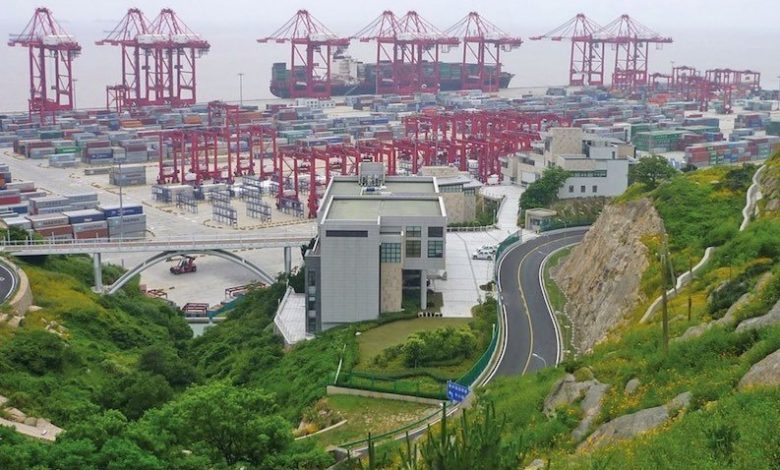Covid-19 highlights gaps in smart port development

One of the many focal points coming out of Covid-19 has been the increasing role being played by technology. Technology has been hailed as helping stem the rate of infection through touchless payment systems as well as keeping people connected through this time of social isolation. In a sense, the pandemic has encouraged speedy development of IT, IoT and A1 applications across a wide range of activities ranging from monitoring people movements to robotics in manufacturing.
The maritime industry has not been immune from this trend. We have seen an escalation of initiatives within the digitalisation and smart port space. Almost daily we see the ‘next best thing’ in smart port technology being announced. However, what Covid-19 has demonstrated are the significant gaps that still exist in the maritime understanding of the shift in supply chain and logistics. Whilst we have seen great progress in ports, such as Rotterdam, Gdansk and in Finland, these interventions are still narrowly focused.
As argued previously, progress has been shaped by what the software developer defines as a smart port. Currently the focus of smart development has the port / vessel as its central focus, mostly developing systems around improving accuracy around ship arrivals and building predictive analytics that enable optimal utilisation of port assets such as gantry crane cranes. Integrated weather and harbour visibility also enable better vessel departure plans.
There has been limited breakthrough by some software developers that are now extending their smart port ecosystem to include quayside considerations, such as warehousing and storage areas. However, what these developments are discovering is that improved vessel management and port assets is creating congestion, just as Shanghai found when automating their facility. Moving to computer vision-based solutions that have 80% accuracy in predictive sailing times has allowed improved visibility to port berth areas and berths enabling visualisation of truck, container and train movements. However, it has highlighted that the applications have still not established digital handshakes between these actors within the ecosystem. The APIs that allow communication between different supply chain and logistics systems are missing.
The suggested port solutions to this further support the existence of the gap. For example, the optimisation of shipping and ports in Rotterdam has created issues around warehousing – not just physical but also data. Not only does this increase the cost and footprint of the port facility, it also raises these questions: What is the rational of getting freight to a port for it to be stranded on land awaiting pickup? Would it not be more effective to use smaller vessels rather than the supersized boxship that would allow smoother planning, hence movement of cargo from port to destination?
Adding to the complexity is the role 5G is playing in delivering this elevated transparency and visibility. By expanding bandwidth and improving data latency larger data sets are now available to assist ‘real-time’ decision making. The complexity is the debate around using open versus closed systems and related security issues. At this stage, developments appear to be along closed subscription systems that denies access to non-subscribers. In a sense this is creating a series of system silos. Furthermore, the divide between China’s Huawei and western aligned 5G network has been aggravated by declining trust between these parties around the Covid-19 pandemic.
In the past it was normal to have delays at ports, these being tolerated and understood as the cost of doing business. However, Covid-19 has required a more urgent approach to medical supply delivery. This has changed the debate and is creating a better feel for what constitutes the new supply chain ecosystem.
China is once again getting ahead of the smart port game. The Ministry of Transport, in response to Covid-19, has announced that China aims to enhance the level of digitalisation of all transport sectors. This will be done by the application of big data in all domains of transport by 2025. This includes a standardised process of using traffic data as well as the sharing of data across all networks. To further facilitate this, newly signed projects in Shanghai on March 31, include integrated circuitry, AI and intelligent manufacturing. This has also triggered development of 6G as they anticipate new challenges that have been brought about by the explosion of data. It is anticipated that this new digitally integrated ecosystem will provide a platform to cater for all cargo sizes to be catered for, reducing the number of trucks on the road and reducing waiting times for onward delivery. In a sense, Covid-19 has sharpened the focus as to what a smart port should look like.
The real breakthrough will come when there is a universal realisation that the port is a part of the supply chain ecosystem. They need to move from defining themselves as the ‘first mile and last mile’ in the supply chain. The new supply chain and logistics ecosystem views a port in a facilitating role along intermodal freight networks. Furthermore, ports are no longer seen as being solely maritime in nature, but now include land-based dry ports as manufacturer and end user as seen as last and first mile considerations. Covid-19 has helped focus the need for adoption of this new hub and spoke infrastructure network as the world rushes to get urgent medical supplies to virus hotspots.
